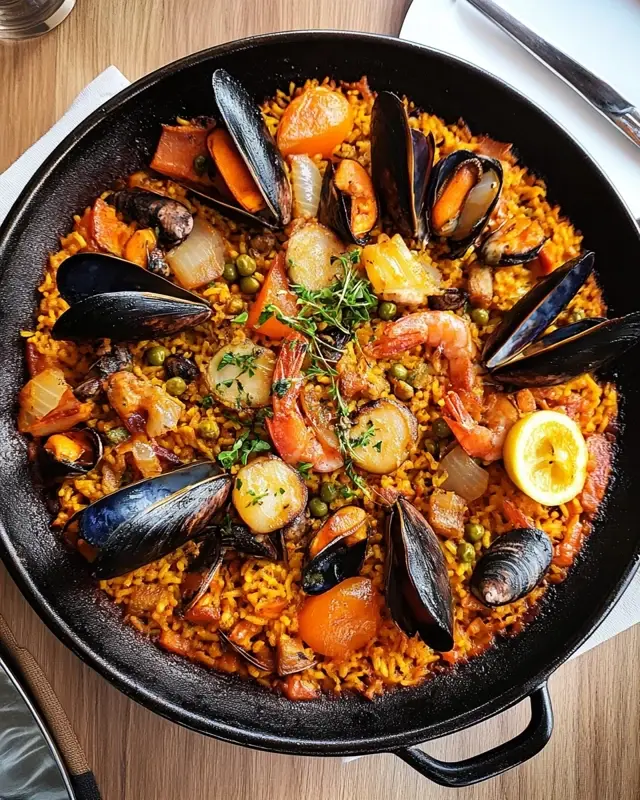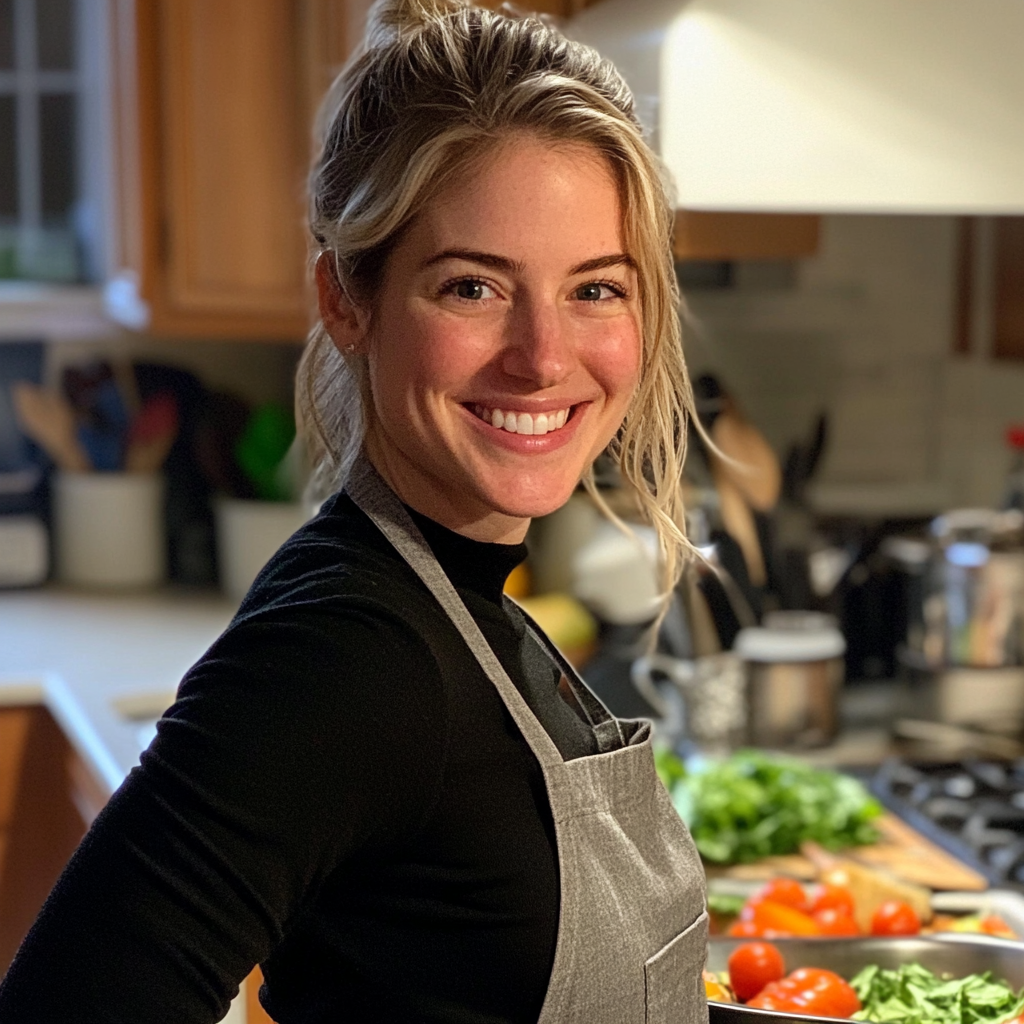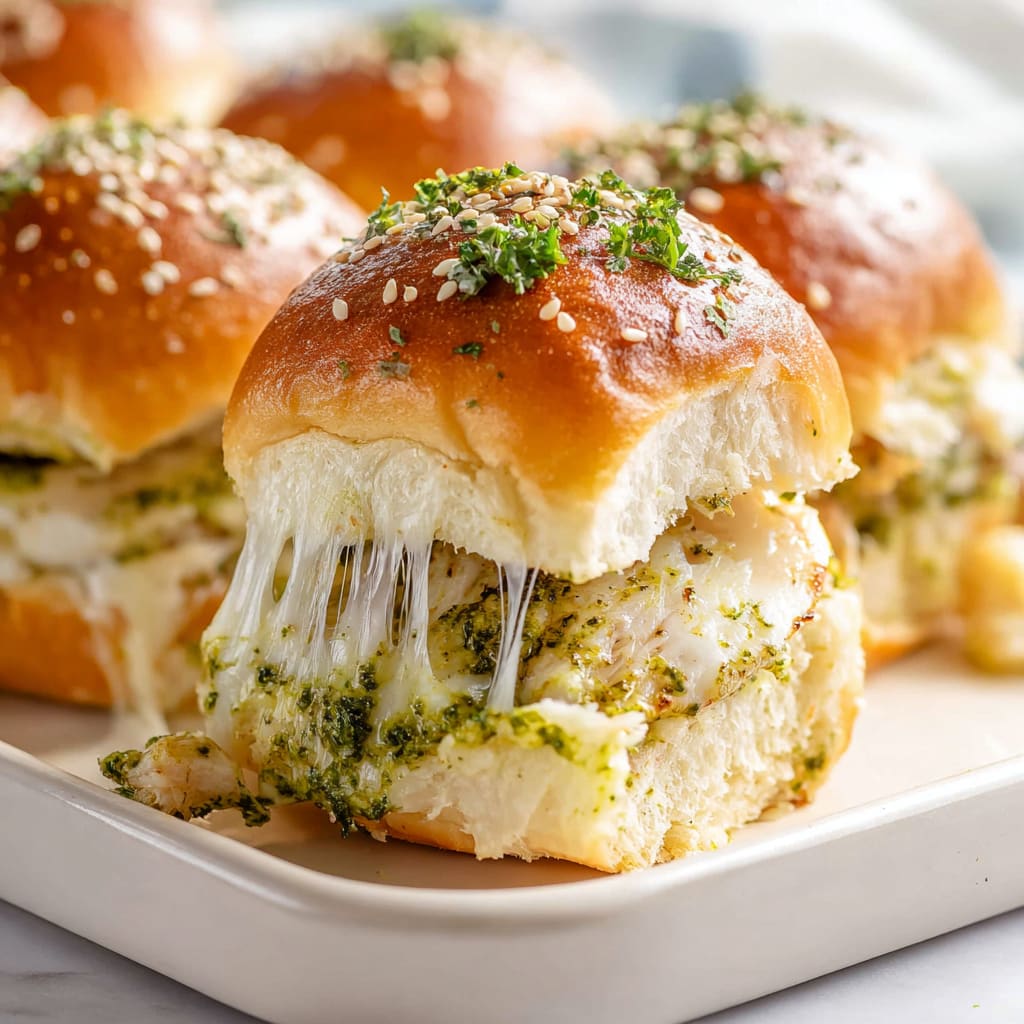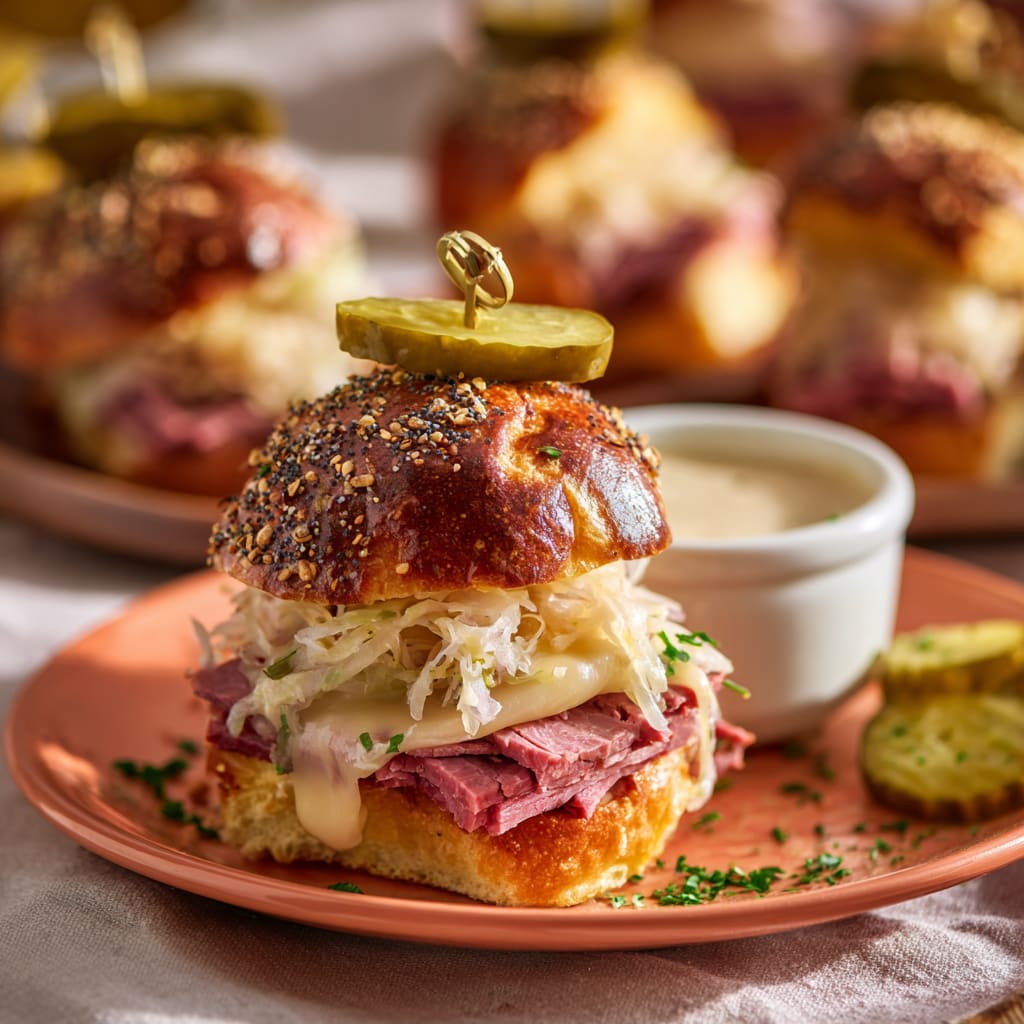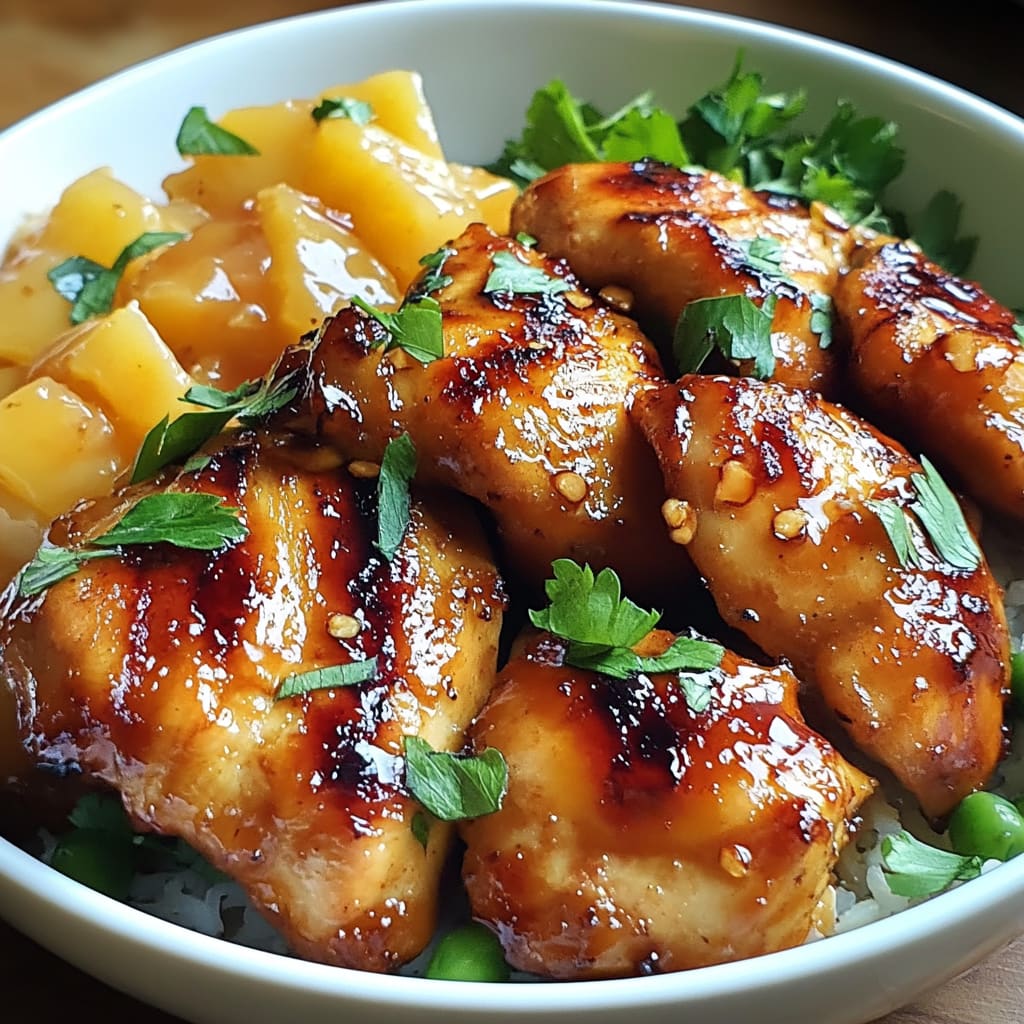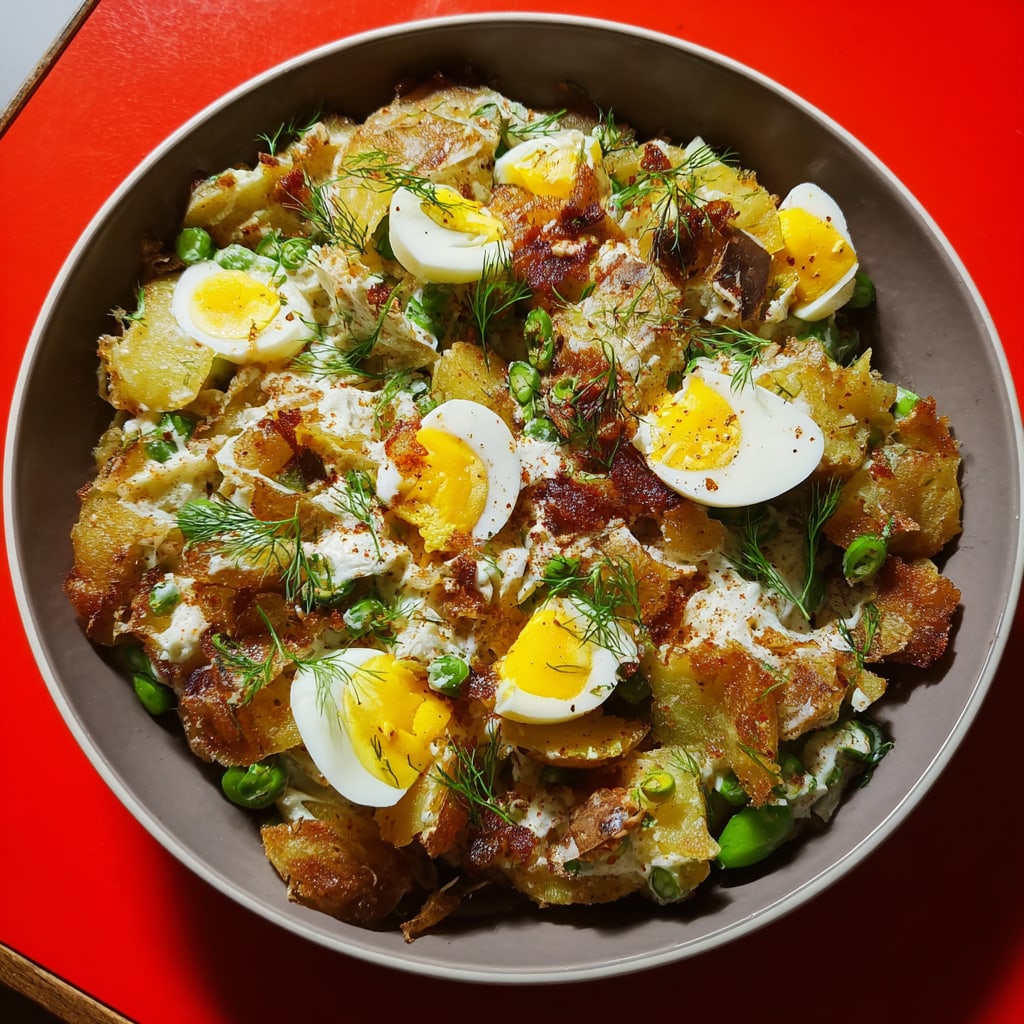Imagine sinking your fork into a vibrant, aromatic Vegetarian Paella, where saffron-infused rice cradles tender vegetables in a symphony of Mediterranean flavors. This Spanish-inspired dish transforms humble ingredients into a show-stopping meal that satisfies without meat. Traditional paella gets a plant-based makeover in this Vegetarian Paella recipe, maintaining all the authentic taste while celebrating seasonal produce. You’ll learn how to achieve that coveted socarrat (crispy bottom layer) and balance the delicate flavors that make this dish a perennial favorite among vegetarians and omnivores alike.
Why You’ll Love This Recipe
This Vegetarian Paella is a feast for both the eyes and the palate, bringing restaurant-quality Spanish cuisine to your home kitchen. The contrast between the crispy socarrat at the bottom and the tender, perfectly cooked rice above creates an irresistible textural experience that’s central to authentic paella. Unlike meat-heavy versions, this vegetable paella allows each ingredient to shine – from the sweet peppers to the earthy mushrooms and the subtle hint of smoked paprika.
What makes this recipe special is its adaptability to seasonal vegetables while maintaining the essential paella technique. It’s surprisingly easy to prepare, requiring just one pan and minimal active cooking time. The dramatic presentation makes it perfect for entertaining, yet it’s simple enough for a weeknight dinner. Plus, it’s naturally gluten-free and can easily become vegan with one simple adjustment to the broth.
The combination of saffron, paprika, and fresh herbs creates a depth of flavor that will transport you straight to Valencia with every bite of this Vegetarian Paella.
Ingredients
For this vibrant Vegetarian Paella, you’ll need:
- 2 cups (400g) short-grain rice (preferably Bomba or Calasparra)
- 4 cups (950ml) vegetable broth
- 1 large red bell pepper, sliced into strips
- 1 large yellow bell pepper, sliced into strips
- 1 medium zucchini, diced into ½-inch pieces
- 1 cup (150g) green beans, trimmed and cut into 1-inch pieces
- 1 cup (150g) artichoke hearts, quartered
- 1 cup (100g) cremini mushrooms, sliced
- 1 medium red onion, finely diced
- 4 garlic cloves, minced
- 1 cup (240g) crushed tomatoes
- ½ cup (75g) frozen peas
- ¼ cup (60ml) olive oil
- 1 teaspoon smoked paprika
- ½ teaspoon saffron threads
- 1 teaspoon dried oregano
- 2 bay leaves
- ¼ cup fresh parsley, chopped
- 1 lemon, cut into wedges
- Salt and black pepper to taste
The saffron is essential for achieving the signature golden color and distinctive flavor of traditional paella rice. For best results, use Spanish short-grain rice which absorbs liquid while maintaining its structure.
Pro Tips
Mastering Vegetarian Paella requires understanding a few key techniques that separate an ordinary rice dish from an authentic Spanish experience:
Develop the Sofrito Base: Take your time (about 10-15 minutes) cooking down the onion, garlic, and tomatoes until they form a thick, fragrant paste. This sofrito creates the foundation of flavor for your paella and shouldn’t be rushed. The deeper the color, the more developed the flavors will be.
Honor the No-Stir Rule: Unlike risotto, authentic paella is never stirred after the broth is added. This allows the socarrat to form at the bottom – that prized layer of caramelized, crispy rice that gives paella its distinctive texture. Resist the urge to stir, even if it feels counterintuitive!
Listen for the Sizzle: In the final minutes of cooking, you’ll hear a subtle crackling sound – this is the socarrat forming. If your rice isn’t fully cooked but the liquid is absorbed, add a bit more broth around the edges of the pan. Remember, different vegetables release varying amounts of moisture, so be prepared to adjust.
The width of your pan is crucial – a traditional paella pan allows for a thin layer of rice (ideally no more than ½ inch deep) to cook evenly and develop that perfect socarrat.
Instructions
Step 1
Prepare your mise en place by chopping all vegetables and measuring ingredients. In a small bowl, warm 2 tablespoons of vegetable broth and steep the saffron threads for at least 10 minutes to release their color and flavor.
Step 2
Heat olive oil in a large 15-inch paella pan or wide skillet over medium heat. Add the diced onion and cook for 5 minutes until translucent. Add the minced garlic and cook for another minute until fragrant, being careful not to burn the garlic.
Step 3
Add bell peppers and mushrooms to the pan, cooking for about 5 minutes until they begin to soften. Stir in the smoked paprika, allowing it to toast briefly (about 30 seconds) to enhance its flavor profile.
Step 4
Pour in the crushed tomatoes and cook for 7-10 minutes, stirring occasionally, until the mixture reduces into a thick, jammy sofrito. This step builds the foundational flavor of your Vegetarian Paella.
Step 5
Add the rice to the pan, stirring for 1-2 minutes to coat each grain with the sofrito mixture. This ensures the rice absorbs the flavors and colors evenly.
Step 6
Pour in the vegetable broth along with the saffron and its soaking liquid, bay leaves, and dried oregano. Add the zucchini and green beans. Season with salt and pepper. Give the pan one gentle shake to distribute everything evenly – this is the last time you’ll mix the paella!
Step 7
Bring the mixture to a boil, then reduce heat to a gentle simmer. Cook uncovered for about 15 minutes, or until rice is nearly tender and most of the liquid has been absorbed.
Step 8
Arrange the artichoke hearts decoratively on top of the rice and sprinkle frozen peas across the surface. Continue cooking for another 5-10 minutes until the rice is tender and the liquid is fully absorbed.
Step 9
Listen for a gentle crackling sound coming from the bottom of the pan – this indicates the socarrat is forming. If you don’t hear it, increase the heat slightly for the final 1-2 minutes of cooking.
Step 10
Remove from heat, cover with a clean kitchen towel, and let rest for 5-10 minutes. Garnish with fresh parsley and serve with lemon wedges for a bright finish to your Vegetarian Paella.
Variations
Vegan Paella: This Vegetarian Paella becomes completely vegan with just one simple modification – ensure your vegetable broth is free from animal products. Many store-bought versions already are, but it’s always good to check. The rest of the recipe remains deliciously plant-based as written.
Seasonal Vegetable Paella: Adapt this paella to showcase the best produce each season offers. In summer, add grilled corn kernels and extra summer squash. For fall, incorporate butternut squash cubes and oyster mushrooms. Winter paella shines with roasted cauliflower and sun-dried tomatoes, while spring calls for asparagus tips and fresh fava beans.
Protein-Boosted Vegetarian Paella: Transform this dish with the addition of protein-rich foods. Add 1 cup of cooked chickpeas or white beans during the final 10 minutes of cooking. Alternatively, incorporate 8 ounces of cubed firm tofu marinated in smoked paprika and olive oil, gently folded in just before serving.
Storage and Serving
Vegetarian Paella tastes wonderful fresh but also holds up exceptionally well as leftovers. Store any remaining paella in an airtight container in the refrigerator for up to 3 days. To reheat, sprinkle with a little water to restore moisture, then warm in a covered skillet over medium-low heat until thoroughly hot. Avoid microwave reheating if possible, as it can create uneven hot spots and make the rice texture inconsistent.
For an authentic Spanish dining experience, serve your paella family-style, directly from the cooking pan placed at the center of the table. Traditional accompaniments include:
- A simple green salad dressed with sherry vinaigrette
- Crusty bread rubbed with garlic and tomato (pan con tomate)
- Spanish olives and pickled vegetables for contrasting flavors
- A chilled glass of Spanish white wine, like Albariño or Verdejo
For a complete tapas-style meal, pair smaller portions of paella with patatas bravas, marinated mushrooms, or Spanish tortilla for an impressive spread that showcases the diversity of Spanish cuisine.
FAQs
Can I use regular long-grain rice for vegetarian paella?
While you can use long-grain rice in a pinch, you won’t achieve the authentic texture of true paella. Short-grain Spanish varieties like Bomba or Calasparra absorb more liquid while maintaining their structure, creating the ideal consistency. If unavailable, Arborio (risotto rice) makes an acceptable substitute.
Is a special paella pan necessary?
A traditional wide, shallow paella pan helps create the signature socarrat and allows rice to cook evenly, but any wide, heavy-bottomed skillet will work. The key is maximizing the surface area – your pan should be at least 12-15 inches wide.
Can I make vegetarian paella ahead of time?
Paella is best enjoyed fresh, but you can prepare the sofrito base up to 24 hours ahead. Store it covered in the refrigerator, then continue with adding rice and broth when ready to serve.
My paella seems too wet/dry. What went wrong?
Different vegetables release varying amounts of moisture. If your paella seems too wet, uncover and cook for a few more minutes. If too dry before rice is tender, add ¼ cup hot broth around the edges of the pan.
How do I know when the socarrat has formed?
Listen for a gentle crackling sound in the final minutes of cooking, and notice a toasty aroma. You can also gently tip the pan to check if the rice is starting to stick to the bottom – this indicates the formation of that prized crispy layer.
Conclusion
This Vegetarian Paella is comfort food at its finest — a vibrant celebration of vegetables and saffron-infused rice that proves you don’t need seafood or meat for an authentic Spanish experience. It’s the kind of dish that brings people together around the table, encouraging shared conversation and leisurely enjoyment of each flavorful bite. Whether you’re a committed vegetarian or simply looking to incorporate more plant-based meals into your rotation, this paella delivers on both tradition and innovation, becoming a recipe you’ll return to whenever you crave a taste of sunshine-filled Mediterranean cuisine.
Print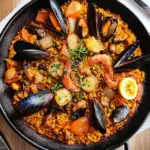
Vegetarian Paella
Description
This vibrant veggie paella brings all the Spanish flair without the meat – perfect for impressing guests or jazzing up your weeknight dinner routine!
Ingredients
- 2 cups (400g) short-grain rice (preferably Bomba or Calasparra)
- 4 cups (950ml) vegetable broth
- 1 large red bell pepper, sliced into strips
- 1 large yellow bell pepper, sliced into strips
- 1 medium zucchini, diced into ½-inch pieces
- 1 cup (150g) green beans, trimmed and cut into 1-inch pieces
- 1 cup (150g) artichoke hearts, quartered
- 1 cup (100g) cremini mushrooms, sliced
- 1 medium red onion, finely diced
- 4 garlic cloves, minced
- 1 cup (240g) crushed tomatoes
- ½ cup (75g) frozen peas
- ¼ cup (60ml) olive oil
- 1 teaspoon smoked paprika
- ½ teaspoon saffron threads
- 1 teaspoon dried oregano
- 2 bay leaves
- ¼ cup fresh parsley, chopped
- 1 lemon, cut into wedges
- Salt and black pepper to taste
Instructions
- Prepare all vegetables and measure ingredients. Warm 2 tablespoons of vegetable broth and steep the saffron threads for at least 10 minutes.
- Heat olive oil in a large paella pan or wide skillet over medium heat. Add diced onion and cook for 5 minutes until translucent. Add minced garlic and cook for another minute.
- Add bell peppers and mushrooms, cooking for about 5 minutes until softened. Stir in smoked paprika and toast for 30 seconds.
- Pour in crushed tomatoes and cook for 7-10 minutes, stirring occasionally, until reduced to a thick sofrito.
- Add rice to the pan, stirring for 1-2 minutes to coat each grain with the sofrito mixture.
- Pour in vegetable broth along with saffron and its soaking liquid, bay leaves, and dried oregano. Add zucchini and green beans. Season with salt and pepper. Shake the pan once to distribute everything evenly.
- Bring to a boil, then reduce heat to a gentle simmer. Cook uncovered for about 15 minutes, until rice is nearly tender and most liquid is absorbed.
- Arrange artichoke hearts on top and sprinkle frozen peas across the surface. Continue cooking for 5-10 minutes until rice is tender and liquid is fully absorbed.
- Listen for a gentle crackling sound from the bottom of the pan, indicating the socarrat is forming. If needed, increase heat slightly for the final 1-2 minutes.
- Remove from heat, cover with a clean kitchen towel, and let rest for 5-10 minutes. Garnish with fresh parsley and serve with lemon wedges.

